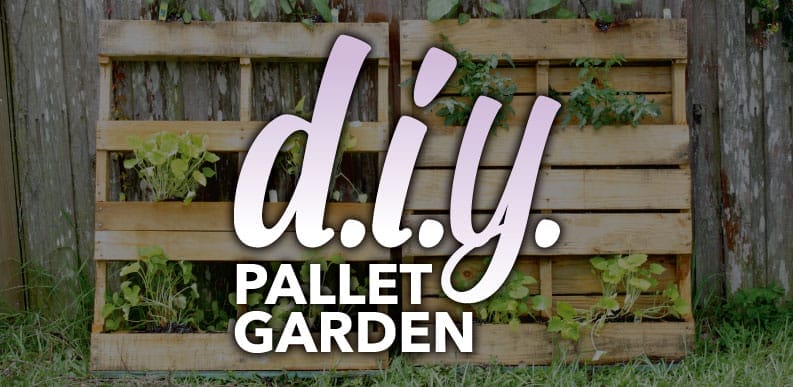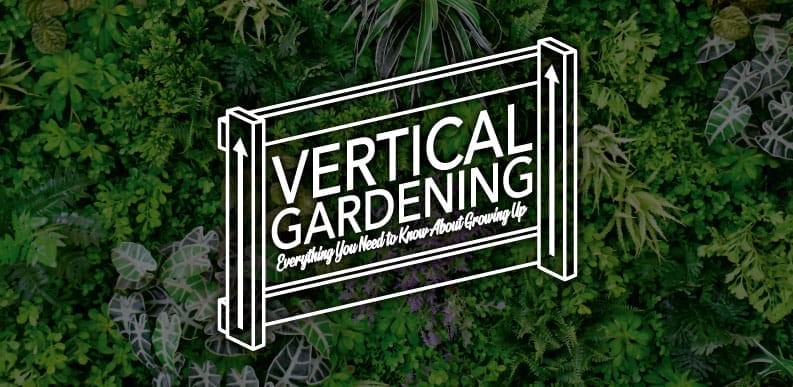Coco coir is an incredible medium that has been steadily trending up among indoor growers for some time. So why are so many growers going cuckoo for coco coir? To start, coir can retain moisture (6-8 times its own weight) and improve soil drainage, it has a naturally neutral pH level, it’s, and it’s resistant to bacteria and fungus. Plus, it’s renewable and reusable! In this segment, we’ll discuss the background of coco coir, the science behind its qualities, pros and cons, and how you can put it to use to improve your garden!
What is Coco Coir?

Coco coir is the brown fiber that lies between the outer shell and the flesh of the coconut fruit. In addition to horticultural uses, coco coir is harvested for a variety of cultural and commercial uses. Horticultural coco coir medium is processed into several forms including coco pith/peat (ground), pellets or chips, and birds-nest varieties, each of which offers slightly different qualities for planting.
Most of the world’s coco coir production takes place in India and Sri Lanka. In fact, it’s highly likely any coco you’ve used has been produced there. India and Sri Lanka produce over 90% of the world’s coconuts. A combination of climate, coco palms indigenous roots, and access to coastal lands makes India and Sri Lanka ideal regions for the cultivation of coconuts.
Coco Coir Vs. Peat Moss – Sustainability
Coconuts are grown and harvested every year mainly for the flesh or ‘meat’, which is both consumed and used to make a variety of non-food products. Husks were once simply an externality of the business model in the coconut food industry and were piled up and left to decompose at harvesting sites. Since its popularization as a grow medium in Holland in the 1980’s, however, usage of coir in the indoor garden has steadily increased, with many growers adopting it as a sustainable alternative for peat moss.
Peat moss (peat) has similar properties to coir, but peat is mined from wetland areas known as bogs. In the US, most peat based soils come from the mining of Canadian bogs to the tune of about 1 million tons a year. Peat is a natural accumulation of decomposed plant matter and fungi that takes thousands of years to form, and as such, is considered to be a non-renewable resource. Mining of peat not only impacts natural habitats but continued heavy usage could eventually lead to exhaustion of the supply. In contrast, coco coir is considered to be a renewable/sustainable resource because there will be a steady supply as coconuts are harvested year after year.
CEC & Nutrient Availability
Cation Exchange Capacity – A great advantage to using coco coir in the grow room comes in the form of its Cation Exchange Capacity (CEC). So what the heck is Cation Exchange Capacity and what does it have to do with growing? To start, we have to talk about molecules, specifically, anions and cations. In simple terms, an ion is a molecule with a positive or negative electrical charge, and cations have a positive charge and anions a negative charge. For CEC, we are looking at negatively charged ions, anions, on the surface of the grow medium and how they can attract and bind with cations. Humus and peat moss soils have a very high CEC, whereas coco falls on the lower end of CEC, which means it has relatively few anions on its surface to attract nutrient cations. In a practical sense, this means that while peat moss or humus based soils are going to have a very high nutrient content, also called “hot” soils, coco coir is going to have very few plant nutrients present. This is the science behind why gardeners have so much control over nutrients in a coco grow, the water, instead of the medium, controls the nutrient availability.
Check out our Ask the Doc: Cation Exchange Capacity video for more!
Buffering – When we talk about “Buffering” a grow medium like coco, we’re describing a process that changes the nutrients present in cation exchange sites within the medium. For coco, a medium that is naturally rich in sodium and potassium, calcium and magnesium (which have a greater positive charge) are used to crowd out the Na and K. Coco that’s purchased through reputable companies like Canna, Roots Organics, and Organic Mechanics usually comes pre-buffered, which means that the company that prepared your coco coir has already been washed with a cal/mag solution. For growers, this means that nutrients added to a buffered coco medium are taken up by the plant’s roots instead of binding with the cation exchange sites on the surface of the coco. Calcium and magnesium deficiencies can be common in gardens using coco mediums, so be sure to either use a coco-specific base nutrient or be sure to supplement feedings with any cal/mag. If you look up cal/mag deficiencies and surplus symptoms it will help you know if your plants are in need or have an excess of either. Check out our Talking Shop on how to identify nutrient deficiencies for more info!
Horticultural Manufacturing
For horticultural coir, exclusively mature, brown coconuts are used. Husks are separated from the hard shell and white flesh either by hand or machine. Afterward, the coconut husks are soaked in water (oftentimes seawater) to soften and loosen the fibers. Then, through a variety of methods such as sifting and wet-milling, the coconut husk is separated into different coco products, such as coco coir pith, coir fiber, and coir chips. The coco coir is then washed and processed to reduce the saltiness. Sometimes fresh water washing in tandem with a calcium solution is used to clean then buffer the coco coir for horticultural use. After the processing and washing processes, the coir is left out in the sun to dry, for many months, then packaged for distribution.
Types of Coco Coir Grow Mediums
Brown fiber/Bird’s Nest
Brown fiber, also sold as Bird’s Nest coco, is the string-like product of coconut husks. Unlike coco peat, brown fiber has little to no moisture retaining capacity. Instead, brown fiber is primarily used for aerating soil mediums. This material also quickly degrades over time in a soil blend, requiring that growers replenish any brown fiber coco before reusing a soil.
Chips/Pellets
Coco chips function very similarly to expanded clay pebbles. The chunky shape and relatively large size create air pockets for your roots but still retain some water. Coco chips combine the properties of coco pith and brown fiber. This coco media, unlike the others, will function will in an ebb and flow or DWC style system. When creating a soil blend, coco chips make a good addition for increased soil aeration.
Coco Peat/Pith
Coco peat/pith is the most common form of coco used today. Most pre-packaged coco contains a blend of coco products, usually a high amount of coco pith paired with some brown fiber. Coco pith is spongy and has the appearance of loose tea leaves. Pith can absorb tremendous amounts of water but has a low air holding capacity in part because of the fine coco particles. Manufactured using a byproduct of the brown fiber harvesting process, coco pith is composed of coco fiber bits and dust.
Coco Coir Pros & Cons
Like every grow medium, there are some advantages and some disadvantages to coco coir, but overall the benefits outweigh the drawbacks. We’ve put this list together to give you a quick snapshot view of the pros and cons of coco:
Planting in Coco Mediums
As we mentioned above, coco coir’s use in gardening has continued to increase over the last 3 decades, and one of the reasons is its versatility as a grow medium. Coir can be used in just about any gardening application. Now that you’re familiar with the background and benefits of coco coir, let’s take a closer look at how you can use it to benefit your own gardening techniques.
Soil Amendment – Mix coir with your soils to increase water holding ability and loosen up the soil. This can be done indoors by adding coir into your potting soil mix from 10-50% coir. Coir is inexpensive and sold in bulk so it can also be used outdoors. Coir can help sandy soils hold more water and allow clay soils to drain better.
Soil alternative – For use as a soil alternative, we highly recommend that you mix coco coir with another grow medium to create a blend to help compensate for coco coir’s absorbency and low CEC. Mix the coir with a material such as perlite that will balance out the water holding capacity. You can also use Growstones or expanded clay with your coir. We recommend mixing coco coir pith with perlite at a 50/50 ratio to reduce the blend’s water holding capacity. The same goal can be achieved using Growstones or expanded clay, aim to add something with high drainage to counter coco’s high water retaining capacity.
Hydroponic – Coco coir can function well in hydroponic drip, Dutch/Bato Buckets, and auto-pot systems. Mostly thanks to its inertness as a growing medium, coco coir serves as a viable alternative to the classic expanded clay pebbles many gardeners prefer in hydro. Coco gives growers several distinct advantages in hydroponic systems. As an inert medium with a low CEC, coco gives growers as much control over their nutrient feeding schedules as any other hydroponic medium. Additionally, Coco has a high water retention capacity along with great aerating properties. Coco can hold about 22% air even when fully saturated with water, which guarantees your roots will always have ample access to oxygen in a coco coir grow. In the same way, coco coir will not work well in deep water culture (DWC) or Flood & Drain style systems. Coco coir as we know is very absorbent, so any system that constantly exposes a grow medium to water cannot use coco or else the coir would be perpetually saturated with water.
Reusing – Thanks to its inertness as a medium and durability, coco coir can be reused! Depending on the quality of your coco after use, it can be recycled up to three times before replacement is in order. In addition, there are plenty of nutrient lines that supply an enzyme that will break down dead root matter and turn it to glucose, making cleaning out used coco simple. Although it’s reusable, you should always be sure to check for pests before reusing. While coir is not good habitat for pests, if you’ve had an infestation, eggs or larvae could hang out in the coir and get on you next generation of plants. If you are pest/disease free, be sure to get as much plant matter out of your grow container as possible and run enzymes throughout, making your coco “clean” enough to start again. Reusing coco is a simple and easy way for gardeners to save money and extend the life of a bag of coco coir. If you garden outdoors you can also add the coir to your outdoor garden after you use it a few times indoors where it will improve the soil for years to come
It’s safe to say there isn’t much to not like about coco coir. It’s an excellent soil amendment or soil medium. It is renewable, it holds water to that your plants don’t dry out quickly, and can increase soil aeration so that your roots also have oxygen available. It is inert so it is not going to promote disease or pest problems and it is pH neutral so it is easy to adjust your pH to maximize plant growth. You do need to provide calcium and magnesium to your plants, which you should already be doing, so there really is no reason not to give coir a try in your next grow cycle!
____________________
Coco coir tips of your own to share? Join the conversation, and comment below! Throw a picture on Instagram and tag us in it (@HTGSupply) – we’d love to see your results! Don’t forget to check out this week’s coupon code and sale information as well! From all of us here, good luck, stay safe, and Happy Growing!
FEATURED COUPON CODE: TSCOCO18Enter the promo code at checkout for a 10% discount on any coco coir medium or visit your local HTG Supply and simply mention this article to get the deal in-store! Thanks again for tuning into Talking Shop with HTG Supply! Offer valid through HTGSupply.com and in-store 10/01/18-10/31/18. Cannot be combined with other offers. Follow us on social media to learn more about indoor growing! Get all kinds of tips, tricks and techniques, and stay up to date all of our sales and events!


